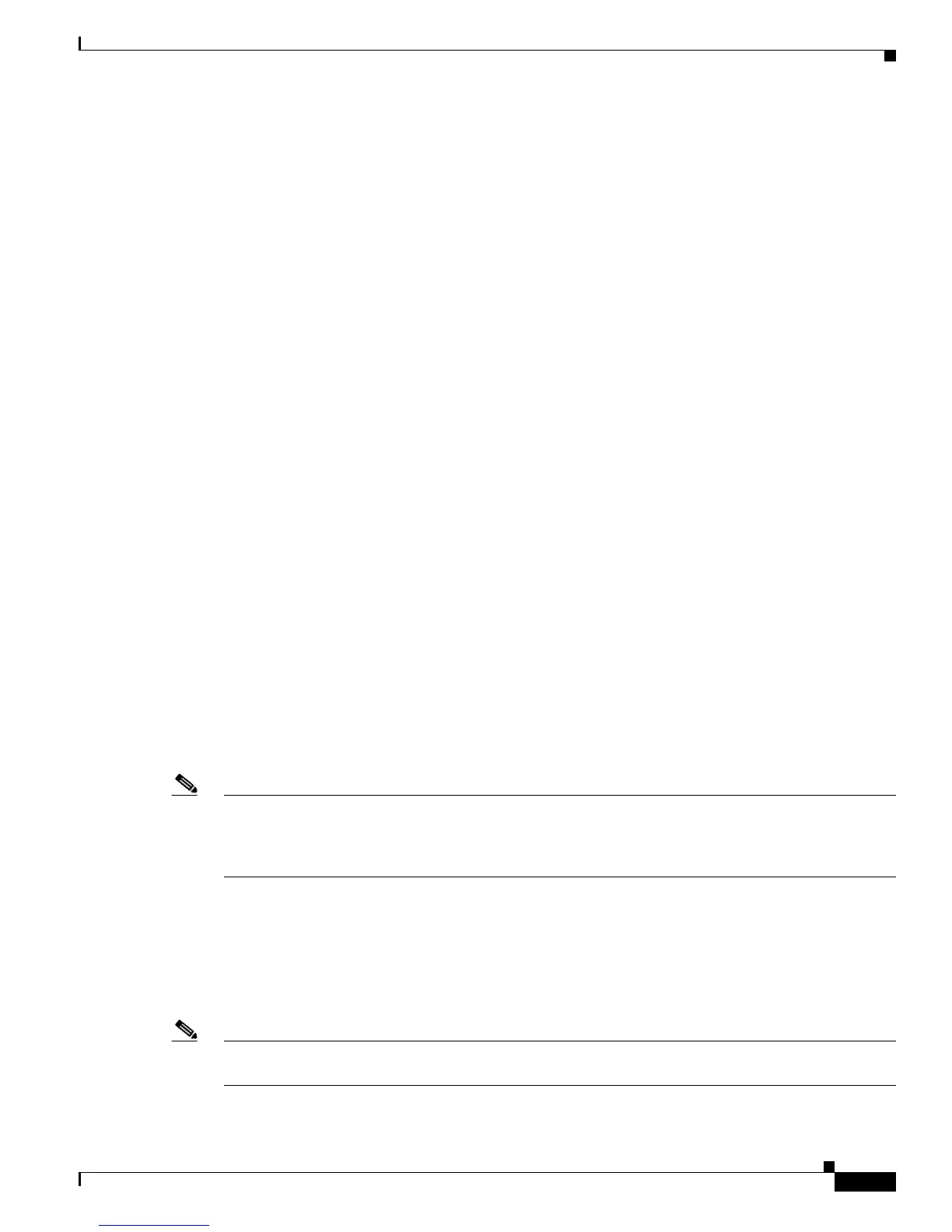33-21
Cisco ME 3400 Ethernet Access Switch Software Configuration Guide
OL-9639-07
Chapter 33 Configuring QoS
Understanding QoS
• Class-based-weighted-fair-queuing (CBWFQ)
You can use the bandwidth policy-map class configuration command to control the bandwidth
allocated to a specific class. Minimum bandwidth can be specified as a bit rate or a percentage of
total bandwidth or of remaining bandwidth.
• Priority queuing or class-based priority queuing
You use the priority policy-map class configuration command to specify the priority of a type of
traffic over other types of traffic. You can specify strict priority for the high-priority traffic and
allocate any excess bandwidth to other traffic queues, or specify priority with unconditional policing
of high-priority traffic and allocate the known remaining bandwidth among the other traffic queues.
–
To configure strict priority, use only the priority policy-map class configuration command to
configure the priority queue. Use the bandwidth remaining percent policy-map class
configuration command for the other traffic classes to allocate the excess bandwidth in the
desired ratios.
–
To configure priority with unconditional policing, configure the priority queue by using the
priority policy-map class configuration command and the police policy-map class
configuration command to unconditionally rate-limit the priority queue. In this case, you can
configure the other traffic classes with bandwidth or shape average, depending on
requirements.
These sections contain additional information about scheduling:
• Traffic Shaping, page 33-21
• Class-Based Weighted Fair Queuing, page 33-23
• Priority Queuing, page 33-25
Traffic Shaping
Traffic shaping is a traffic-control mechanism similar to traffic policing. While traffic policing is used
in input policy maps, traffic shaping occurs as traffic leaves an interface. The switch can apply
class-based shaping to classes of traffic leaving an interface and port shaping to all traffic leaving an
interface. Configuring a queue for traffic shaping sets the maximum bandwidth or peak information rate
(PIR) of the queue.
Note You cannot configure traffic shaping (shape average) and CBWFQ (bandwidth) or priority queuing
(priority) for the same class in an output policy map. You cannot configure traffic shaping for a traffic
class when strict priority (priority without police) is configured for another class within the output
policy-map.
Class-Based Shaping
Class-based shaping uses the shape average policy-map class configuration command to limit the rate
of data transmission as the number of bits per second to be used for the committed information rate for
a class of traffic. The switch supports separate queues for three classes of traffic. The fourth queue is
always the default queue for class class-default, unclassified traffic.
Note In the Cisco ME switch, configuring traffic shaping also automatically sets the minimum bandwidth
guarantee or committed information rate (CIR) of the queue to the same value as the PIR.

